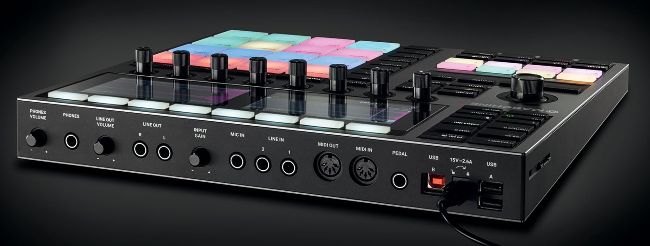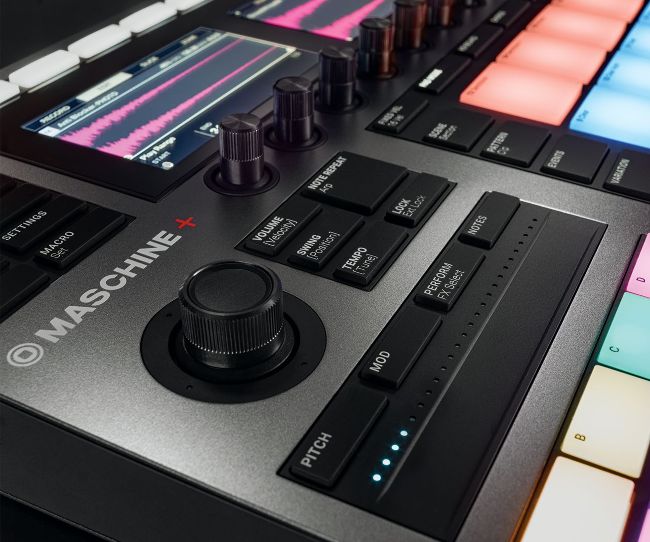is hardware killing software?
Native Instruments Maschine+
Native Instruments’ Maschine+ is a unique example of a software product that’s become a hardware device – how well has it adjusted to its new standalone lifestyle?
Of the four units we have in this hardwarefocussed roundup, we spent rather less time than we would have liked with Maschine+, simply as there weren’t enough units available for NI to get us one in time. That said, we have had enough time with the unit to get a good feel, and certainly enough to discover that Maschine+ is actually a very good piece of equipment.
Maschine+ is unique amongst our ‘DAW killers’ because it was originally a software product-plus-controller that worked with a Mac or PC – it’s migrated out of the computer and into the controller itself, you might say, although even this standalone example can still be used as a controller and audio interface for the computer/software version as well. As well as being a sampler, Maschine+ comes ready loaded with preset sounds from NI products such as Kontakt, Massive, and Reaktor, to name a few.


Once unpacked, the Maschine+ is heavier than it looks, which is probably down to the aluminium case, giving it a feel of solidity and durability. It’s very quick to get started – attach the curious locking power supply connector, press the power button, then follow the on-screen steps that use QR codes to get you online, registered, and learning fast. That WiFi connection can also get you hooked up with Ableton Link, for wireless sync between the Maschine+ and any compatible software or hardware, including the Akai Force that’s reviewed elsewhere. We can certainly praise the Maschine+ for the included sounds and slick workflow, and at the same time comment on it lacking I/O, while also observing that this incarnation of the Maschine platform isn’t so much a ‘radical departure’ as it is an enhancement to what already exists.
Hardware gone soft
It’s not often we see a hardware product derived from software. The Maschine+ takes NI’s existing Maschine controllers and software, and merges them into a new device that can operate independently of the computer that used to bind them. The Polyend Tracker follows a similar path, but it’s more what you’d call ‘inspired’ by tracker software, rather than directly based on one application. Any device created this way has to resist feature bloat, as a fixed hardware interface can’t convey the same amount of information that a more flexible software display can. Of course, we usually see the exchange happen the other way round – although there are many forward-thinking plugin makers, there are many others proudly modelling the sound of classic hardware, whether vintage synths, tape delays or legendary recording studio consoles. There’s still a feeling that this approach gives credibility to a software product, and it’s marketing friendly too. The ultimate conclusion of softwarelike-hardware syndrome is seen when software adverts use graphics that make the software interface look like the front panel of a hardware box!